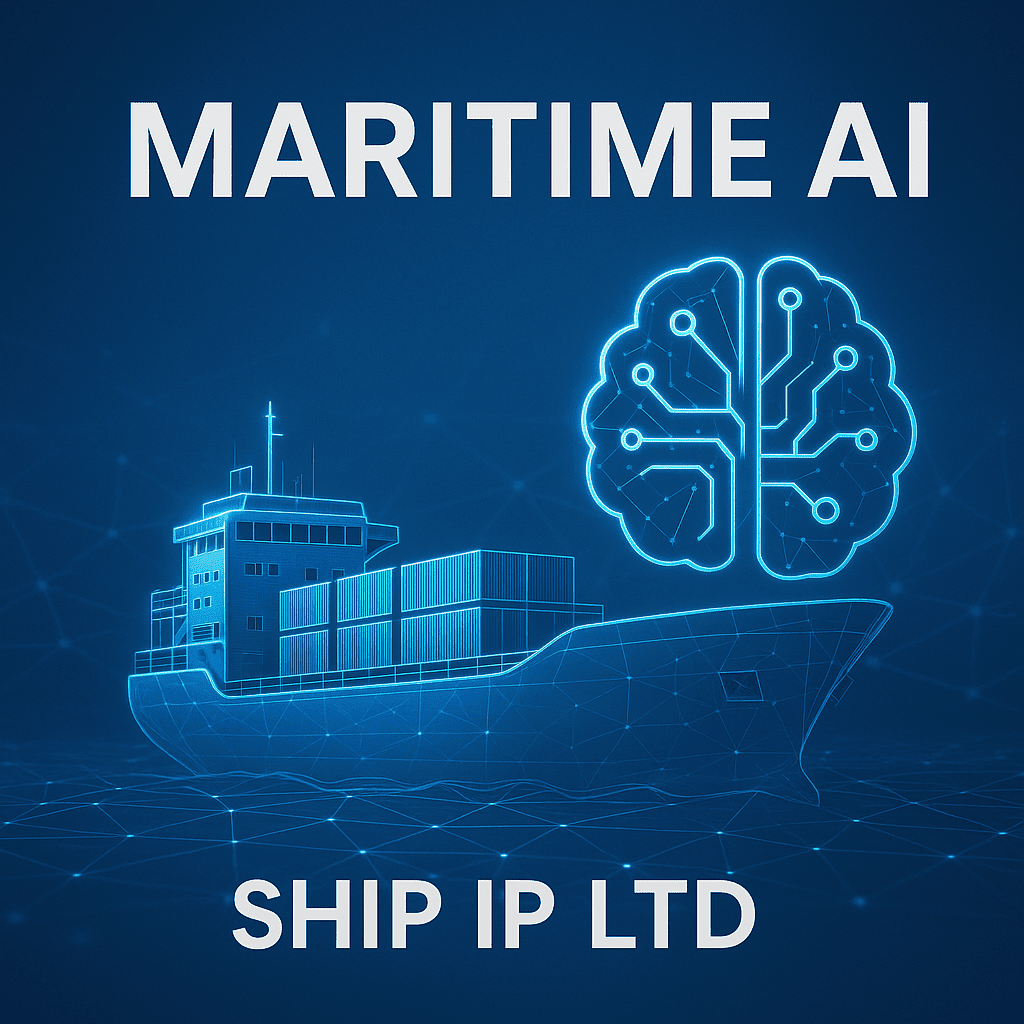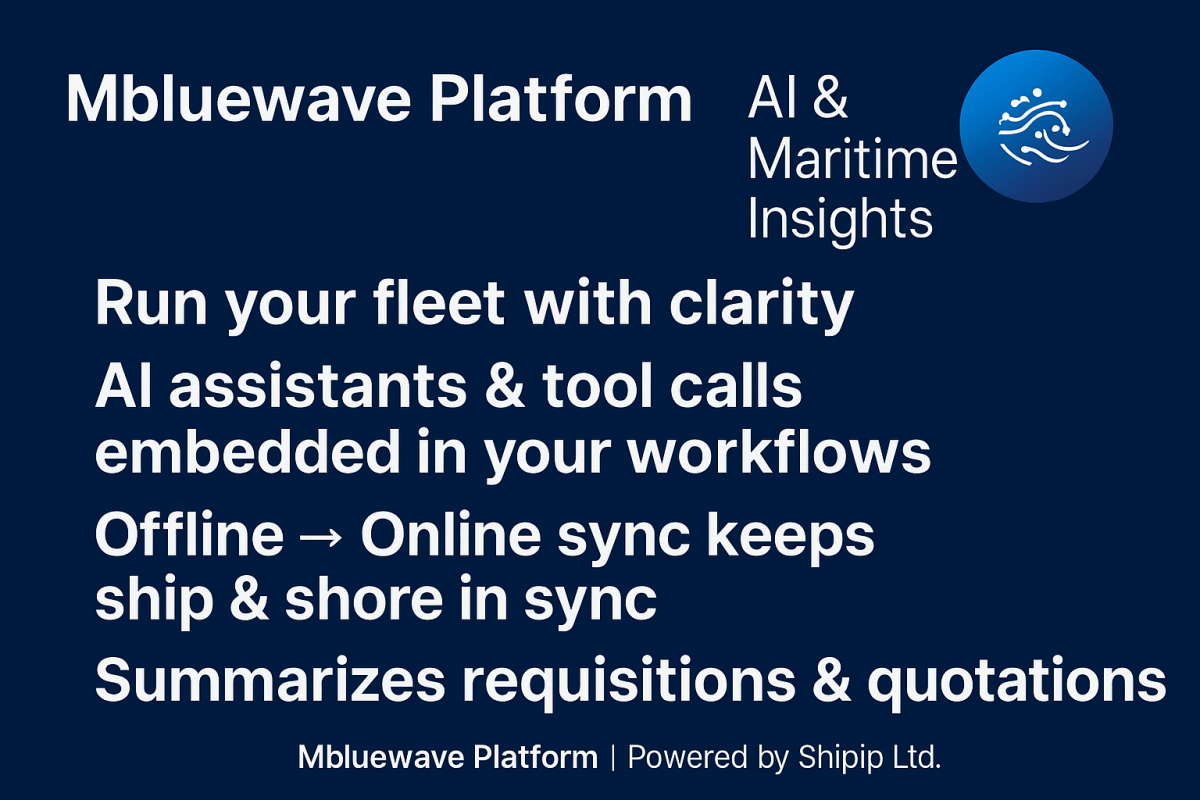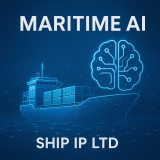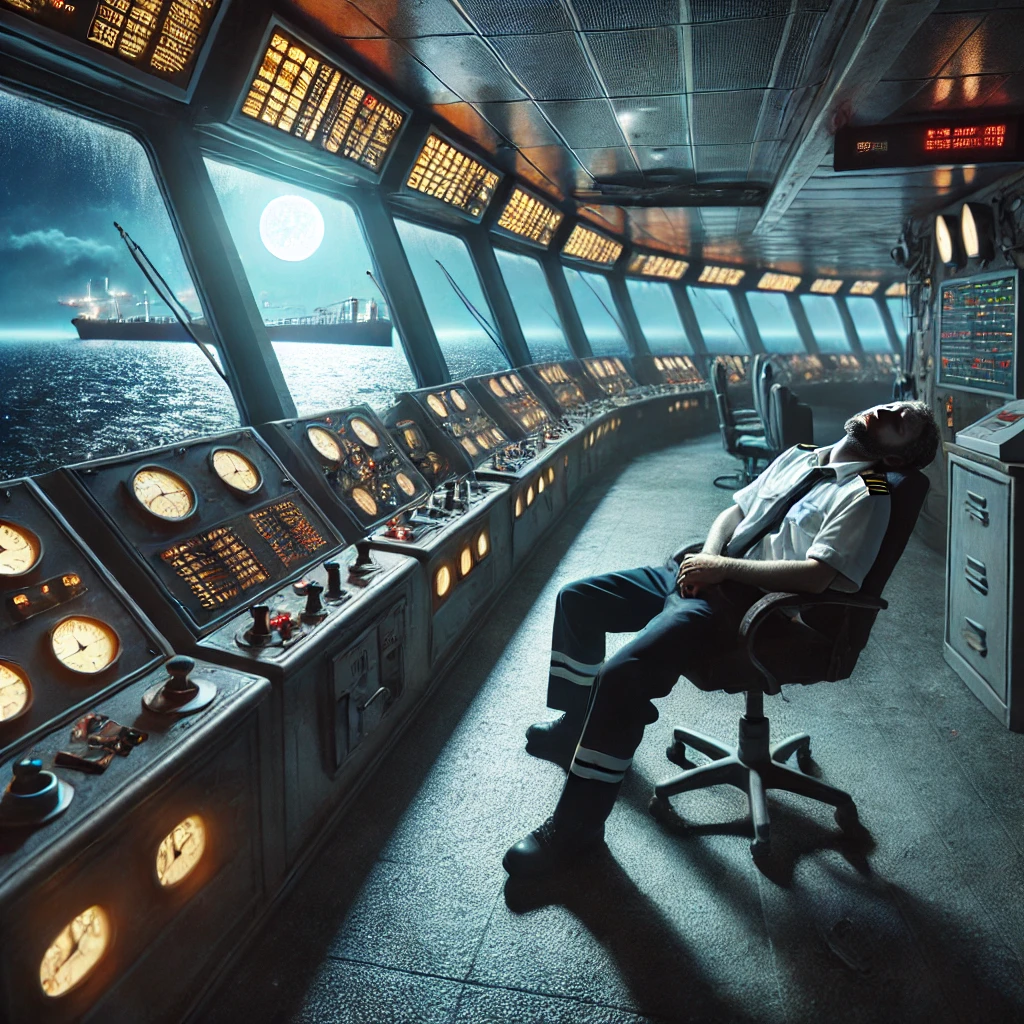🌍 Introduction
Artificial Intelligence continues to reshape the maritime sector at an accelerating pace. Over the past month, several key industry players have launched new technologies, formed strategic partnerships, and invested heavily in AI-driven solutions aimed at improving safety, efficiency, and operational visibility.
Below is a roundup of the most important Maritime AI updates from the last 30 days that every shipowner, operator, and maritime professional should know.
🛰️ 1. Windward Launches Advanced “Remote Sensing Intelligence”
Windward unveiled Remote Sensing Intelligence, a next-generation platform that merges satellite data, RF signals, and AI analytics to deliver real-time operational insights.
This technology provides mission-ready intelligence for both commercial shipping and government agencies, improving decision-making around compliance, security, sanctions, and vessel behavior.
Why it matters:
-
Enhanced maritime domain awareness
-
Faster detection of suspicious activity
-
Stronger compliance monitoring
- AI in shipping
- Maritime technology trends
⚙️ 2. Ardmore Shipping Rolls Out SteelCorr for AI-Driven Maintenance
Ardmore Shipping announced fleetwide deployment of SteelCorr, an AI-based corrosion monitoring and predictive maintenance tool.
This system uses automated inspections and intelligent corrosion modeling to reduce manual surveys and extend vessel structure life.
Impact on industry:
-
Reduced maintenance costs
-
Less downtime
-
Safer fleet operations
-
Ship management AI
- Maritime robotics and automation
-
💼 3. United Maritime Invests in Ship-Management AI
United Maritime Corporation revealed new investments into AI-powered ship-management technologies, signaling a broader shift among traditional shipowners toward digitalization and intelligent fleet operations.
Latest maritime AI developments 2025
Strategic benefits:
-
Optimized vessel performance
-
Automated reporting & analytics
-
Smarter operational planning
🤖 4. ABS & Persona AI Introduce Humanoid Robotics to Shipyards
A groundbreaking partnership emerged between ABS and Persona AI, focusing on integrating humanoid robots into shipyard operations.
These robots will support inspections, safety checks, and high-risk tasks, reducing human exposure and improving productivity.
Expected outcomes:
-
Lower accident risk
-
Improved inspection accuracy
-
Faster shipyard workflows
🌐 5. AI Expands Across Port Logistics & Maritime Transport
Industry analyses this month highlighted the rapid spread of AI in port logistics, ship routing, transport corridor optimization, and autonomous coordination systems.
Key developments include:
-
Real-time optimization of port movements
-
AI decision-engines reducing congestion
-
Automation of container handling and yard planning
📊 6. AI for Crew Optimization & Compliance is Accelerating
Beyond hardware and robotics, AI tools aimed at crew welfare, fatigue monitoring, rest-hours validation, and regulatory compliance continue gaining traction.
More companies are now adopting AI-enhanced systems to support safety, reduce human error, and lower PSC (Port State Control) risks.
🔮 What to Watch in 2026
Based on current trends, the maritime industry is heading toward:
-
AI-powered vessel health monitoring becoming standard
-
Satellite + AI integrated platforms for real-time global visibility
-
Robotic inspections replacing manual survey tasks
-
Predictive analytics for safety, compliance, and crew fatigue
-
Greater investment from traditional shipping companies
AI is no longer optional — it’s becoming central to maritime competitiveness.
⚓ Conclusion
The last month showcased major advancements in Maritime AI, from satellite-driven intelligence and predictive maintenance to robotics and strategic investments.
As we move into 2026, the digital transformation of shipping will accelerate, with AI playing a critical role in safety, compliance, efficiency, and fleet optimization.







